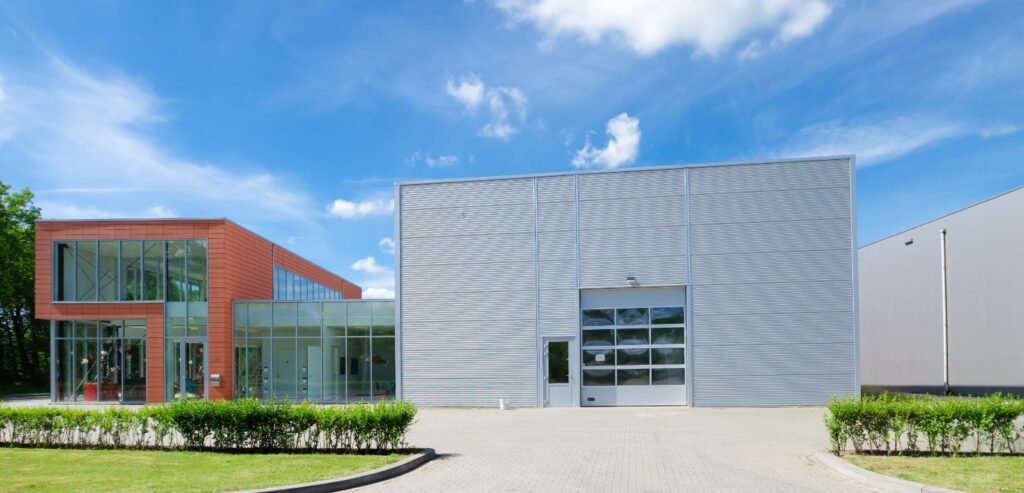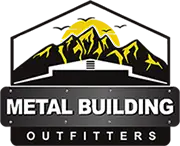
Contents
Have you ever considered the sheer strength that prefabricated steel structures possess? The resilience and durability of these constructions are not just impressive but crucial in various settings.
From offering superior structural integrity to unmatched fire resistance, the benefits of opting for steel structures are vast and impactful. But what makes them so resilient and enduring?
Let’s explore the top strength benefits that these prefabricated steel structures bring to the table and why they stand out in the realm of construction materials.
Key Takeaways
- High-strength properties and exceptional durability due to precise engineering methods and corrosion resistance
- Resistance to environmental elements such as corrosion, moisture, and chemicals through weatherproof design
- Longevity and cost-effectiveness with minimal maintenance requirements for a prolonged lifespan
- Impact resistance and seismic performance showcasing material durability, safety enhancements, and seismic resilience
Superior Structural Integrity
Prefabricated steel structures exhibit exceptional structural integrity due to the high-strength properties inherent in steel components and the precise engineering methods used during fabrication. This integrity is further enhanced by the corrosion resistance of steel, which protects the structure from environmental factors that can weaken other building materials over time. Steel’s ability to resist corrosion ensures that the structural integrity of prefabricated steel buildings remains uncompromised, providing long-lasting durability and reliability.
Moreover, design flexibility is a key factor contributing to the superior structural integrity of prefabricated steel structures. Steel’s strength-to-weight ratio allows for the creation of complex and innovative designs that can withstand heavy loads and harsh conditions without sacrificing structural integrity. This design flexibility enables architects and engineers to tailor prefabricated steel structures to meet specific requirements while ensuring optimal performance and safety.
High Load-Bearing Capacity
With a remarkable ability to withstand heavy loads, the high load-bearing capacity of steel structures is a defining feature that ensures structural stability and safety. When it comes to structural design, the load-bearing capacity of a building is a critical aspect that influences the overall safety and performance of the structure. Steel’s high load-bearing capacity is a result of meticulous material selection and engineering precision.
In structural design, the load-bearing capacity refers to the maximum weight a building can support without experiencing failure or deformation. Steel’s exceptional strength-to-weight ratio allows for the construction of structures that can support significant loads while remaining relatively lightweight compared to other construction materials. This characteristic is especially advantageous in scenarios where large spans or heavy loads need to be accommodated.
The high load-bearing capacity of steel structures is a direct result of the material selection process. Steel’s inherent strength properties make it an ideal choice for buildings that require robust support systems. Additionally, advancements in steel manufacturing techniques have further enhanced the material’s load-bearing capabilities, allowing for the construction of increasingly complex and demanding structures.
Exceptional Resistance to Elements
Steel structures exhibit exceptional resistance to various elements, showcasing their durability and reliability in challenging environmental conditions. The corrosion resistance and weatherproof design of prefabricated steel structures make them ideal for withstanding the harshest elements over time.
When it comes to corrosion resistance, steel structures excel due to their protective coatings and galvanized finishes. These coatings act as a barrier against moisture, chemicals, and other corrosive agents, ensuring the longevity of the structure even in corrosive environments. Additionally, the weatherproof design of steel structures prevents water infiltration, reducing the risk of rust and decay.
To further illustrate the exceptional resistance of prefabricated steel structures to elements, consider the table below highlighting key features:
| Element | Corrosion Resistance | Weatherproof Design |
|---|---|---|
| Protective Coatings | Shields against moisture and chemicals | Prevents water infiltration, reducing rust |
| Galvanized Finishes | Adds an extra layer of protection against corrosive agents | Enhances durability in various weather conditions |
| Structural Integrity | Maintains strength and stability even in harsh climates | Resists deformation due to temperature fluctuations |
Longevity and Low Maintenance
When considering the longevity and low maintenance benefits of prefabricated steel structures, you’ll find that these buildings offer exceptional durability, ensuring a prolonged lifespan.
With minimal maintenance requirements, such structures provide a cost-effective solution for long-term use while maintaining their structural integrity. The inherent strength of steel minimizes the need for frequent repairs or replacements, making it a reliable choice for various construction projects.
Durability and Longevity
The prefabricated steel structures exhibit exceptional durability and longevity, making them a reliable choice for low-maintenance construction projects. When considering durability and longevity, prefabricated steel structures stand out due to their long-lasting strength and robust construction techniques. Here’s why they excel in this aspect:
Resilient Against Environmental Factors: Prefabricated steel structures are highly resistant to harsh weather conditions, corrosion, and pests, ensuring longevity without significant wear and tear.
Minimal Maintenance Requirements: Due to their robust construction and protective coatings, these structures require minimal maintenance over their lifespan, reducing long-term costs.
Extended Service Life: With proper care and maintenance, prefabricated steel structures can provide a service life that far exceeds traditional building materials, ensuring lasting value for your construction projects.
Minimal Maintenance Required
Considering the exceptional durability and longevity of prefabricated steel structures, it becomes evident that minimal maintenance is required to uphold their strength and reliability over time. These structures are designed to withstand harsh environmental conditions, reducing the need for frequent upkeep. This leads to significant cost efficiency as maintenance expenses are minimal compared to other building materials. Additionally, the design flexibility of prefabricated steel structures allows for easy modifications or expansions without compromising the structural integrity, further contributing to their longevity with minimal maintenance requirements.
| Cost Efficiency | Design Flexibility | Minimal Maintenance |
|---|---|---|
| Lower maintenance costs due to durability | Easily adaptable for modifications | Reduces upkeep frequency |
Impressive Impact Resistance
With impressive impact resistance, prefabricated steel structures demonstrate their ability to withstand extreme forces without compromising structural integrity. This feature sets them apart as durable and reliable construction options.
Here are some key points to consider:
Material Durability: Prefabricated steel structures are engineered using high-quality steel that’s specifically designed to resist impact. This material’s strength ensures that the structure can endure sudden and intense forces without buckling or deforming.
Enhanced Safety: The impact resistance of prefabricated steel structures enhances safety for occupants. In high-risk areas prone to natural disasters or heavy machinery use, these structures offer a secure environment by minimizing the risk of collapse or structural failure upon impact.
Long-Term Cost Savings: The superior impact resistance of prefabricated steel structures translates to long-term cost savings. With reduced maintenance and repair needs due to their ability to withstand impact, these structures offer a cost-effective solution over their lifespan.
Resilience to Extreme Conditions
Demonstrating exceptional durability under impact, prefabricated steel structures also exhibit remarkable resilience to extreme conditions. Their ability to withstand a wide range of environmental stresses makes them ideal for areas prone to extreme weather events. Prefabricated steel structures are engineered to endure harsh climates, including intense heat, freezing temperatures, high winds, heavy snow loads, and even seismic activity.
When faced with extreme weather, such as hurricanes or tornadoes, prefabricated steel buildings have a proven track record of standing strong against these forces of nature. Their sturdy frames and connections ensure structural integrity, preventing damage and maintaining occupant safety. Additionally, the corrosion-resistant properties of steel contribute to their longevity in various climate conditions.
Climate endurance is a key feature of prefabricated steel structures, as they’re designed to adapt to temperature fluctuations and moisture levels without compromising their strength. Whether it’s the scorching sun of deserts or the icy conditions of polar regions, steel buildings remain stable and reliable. This resilience translates to cost savings for owners, as the need for frequent repairs or replacements due to weather-related damage is significantly reduced.
Enhanced Seismic Performance
When considering the seismic performance of prefabricated steel structures, you can benefit from their inherent structural resilience against earthquakes. These structures assure integrity and safety during seismic events due to their robust design and earthquake-resistant features.
The steel components’ strength and flexibility contribute significantly to minimizing damage and enhancing overall safety in seismic regions.
Seismic Resilience Advantages
Enhancing the seismic performance of prefabricated steel structures involves implementing innovative design strategies and advanced construction techniques. This ensures that the structure can withstand seismic forces and minimize damage.
When it comes to seismic resilience advantages, prefabricated steel structures offer several benefits:
Seismic Retrofitting: Retrofitting existing steel structures with modern seismic design principles enhances their ability to resist earthquakes.
Strengthening connections and joints helps redistribute forces during seismic events.
Building Codes Compliance: Adhering to stringent building codes ensures that prefabricated steel structures are designed to withstand seismic activities.
Following code requirements for material strength and building height enhances overall seismic resilience.
Advanced Seismic Design: Incorporating state-of-the-art seismic design technologies enhances the overall performance of prefabricated steel structures during earthquakes.
Structural Integrity Assurance
To ensure the enhanced seismic performance of prefabricated steel structures, a critical focus on structural integrity assurance is imperative to mitigate potential damage during seismic events. Welding advantages play a significant role in enhancing the structural integrity of prefabricated steel buildings. The high-strength welds in these structures provide superior resistance to seismic forces, ensuring a robust framework that can withstand intense shaking. Additionally, construction efficiency is heightened through advanced welding techniques, reducing the overall time required for assembly. This efficiency not only saves time but also minimizes labor costs, making prefabricated steel structures a cost-effective choice for seismic-prone regions. The table below highlights key welding advantages and construction efficiency in enhancing the seismic performance of prefabricated steel structures.
| Welding Advantages | Construction Efficiency |
|---|---|
| High-strength welds | Reduced assembly time |
| Enhanced structural integrity | Cost-effective labor |
| Superior resistance to seismic forces | Efficient construction process |
Earthquake Safety Features
How can prefabricated steel structures be fortified to ensure optimal earthquake safety features and enhanced seismic performance?
When it comes to earthquake safety and enhanced seismic performance, prefabricated steel structures can be designed and retrofitted with specific features in mind:
- Base Isolation: Utilizing base isolators to decouple the structure from the ground motion, reducing seismic forces.
- Ductile Design: Implementing ductile detailing to allow the structure to deform in a controlled manner during an earthquake.
- Energy Dissipation Devices: Incorporating energy dissipation devices like dampers to absorb and dissipate seismic energy, reducing structural damage.
Unmatched Fire Resistance
With unparalleled fire resistance capabilities, prefabricated steel structures stand out as a superior choice for ensuring maximum safety in the event of a fire. The fireproof design and safety measures integrated into these structures make them a reliable option for protecting lives and property in case of a fire emergency.
Benefits of Prefabricated Steel Structures in Fire Resistance:
| Benefits | Description | Importance |
|---|---|---|
| Fireproof Design | Prefabricated steel structures are inherently non-combustible, reducing fire risks significantly. | Ensures safety of occupants. |
| Intumescent Coatings | Special coatings applied to steel components expand when exposed to high temperatures, forming a protective barrier. | Enhances structural integrity. |
| Smoke Management Systems | Integrated systems designed to control smoke movement in the event of a fire, aiding in safe evacuation. | Minimizes health hazards. |
Prefabricated steel structures offer a unique advantage in fire resistance due to their ability to withstand high temperatures and prevent the spread of flames. The use of intumescent coatings further enhances their durability in the face of fire incidents. Additionally, smoke management systems play a crucial role in maintaining a clear evacuation path, ensuring the safety of individuals within the structure. By prioritizing fire safety through innovative design and preventive measures, prefabricated steel structures provide a secure environment for occupants, making them a top choice for fire-resistant construction needs.
Review
The top strength benefits of prefabricated steel structures make them a superior choice for various construction projects.
With superior structural integrity, high load-bearing capacity, exceptional resistance to elements, longevity, low maintenance, impressive impact resistance, resilience to extreme conditions, enhanced seismic performance, and unmatched fire resistance, prefabricated steel structures offer unparalleled durability and reliability.
Consider these advantages when selecting materials for your next construction project to ensure a strong and long-lasting building solution.
Recent Posts
What Are Your Options for Agricultural Metal Storage?
When you’re exploring agricultural metal storage options, it’s crucial to take into account the various
How to Choose Versatile Agricultural Metal Structures
When you’re considering versatile agricultural metal structures, it’s essential to start by evaluating your specific
Analyzing Costs of Custom Metal Buildings: A Guide
When it comes to custom metal buildings, costs can be like a puzzle waiting to


